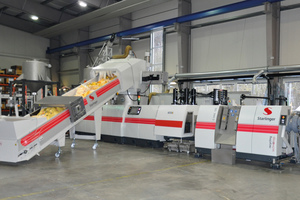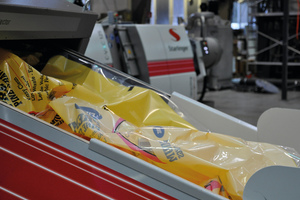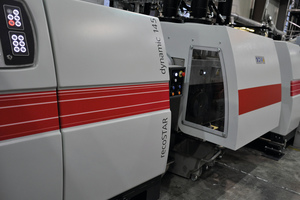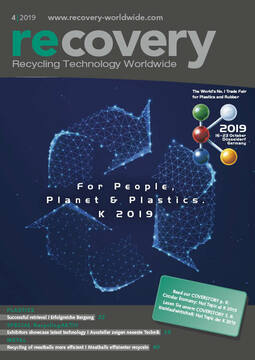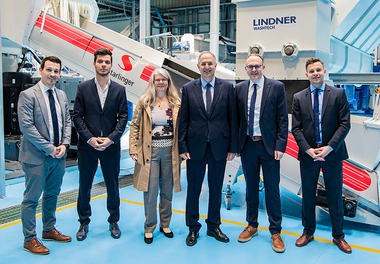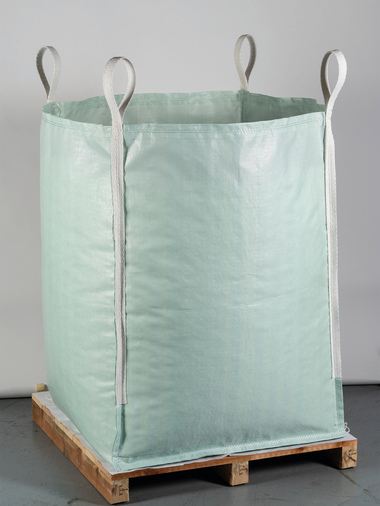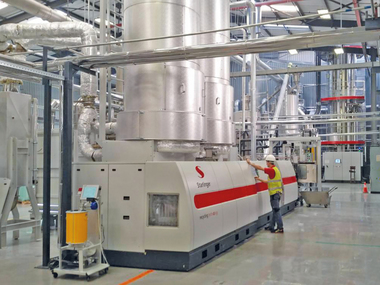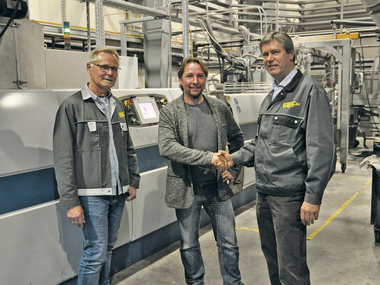Recycling line recoSTAR dynamic 145
In early 2018, Starlinger recycling technology introduced a new size – the recoSTAR dynamic 145 – that is specially designed for a capacity range of
~1000 kg/h. The first three lines are currently being installed, and the company has already received orders for additional machines of this type.
The fields of application of the recoSTAR dynamic are manifold. Be it industrial or post-consumer waste, humid or heavily printed material – the line is extremely versatile and permits a customized setup. A central component is the SMART feeder, which on top of drying and condensing the material ensures a homogeneous mixing ratio. Recyclers of post-consumer and/or heavily printed film also operate the highly efficient degassing unit C-VAC; this module is positioned after the filter and can be controlled independently of the main extruder. In the C-VAC, the melt surface is increased by 300 %, which allows the efficient removal of gases and prevents air from being trapped inside the regranulate. This is especially important for film recyclers because ink, humidity and contamination can lead to higher formation of gases during the extrusion process. Another benefit is the rECO package of the recoSTAR dynamic: It saves costs and protects the environment through a 10 % reduction in energy consumption.
The market gives a warm welcome to the new machinery size: Shortly after its introduction, Starlinger recycling technology could log the first orders in its books. Beginning of 2019, the first three lines are being installed and will be processing different kinds of film (LDPE / LLDPE / HDPE, agricultural film or production waste). All lines are equipped with the C-VAC module and will recycle material with 4-10 % surface moisture. Due to its high quality, the regranulate will predominantly be used for the production of new films.

